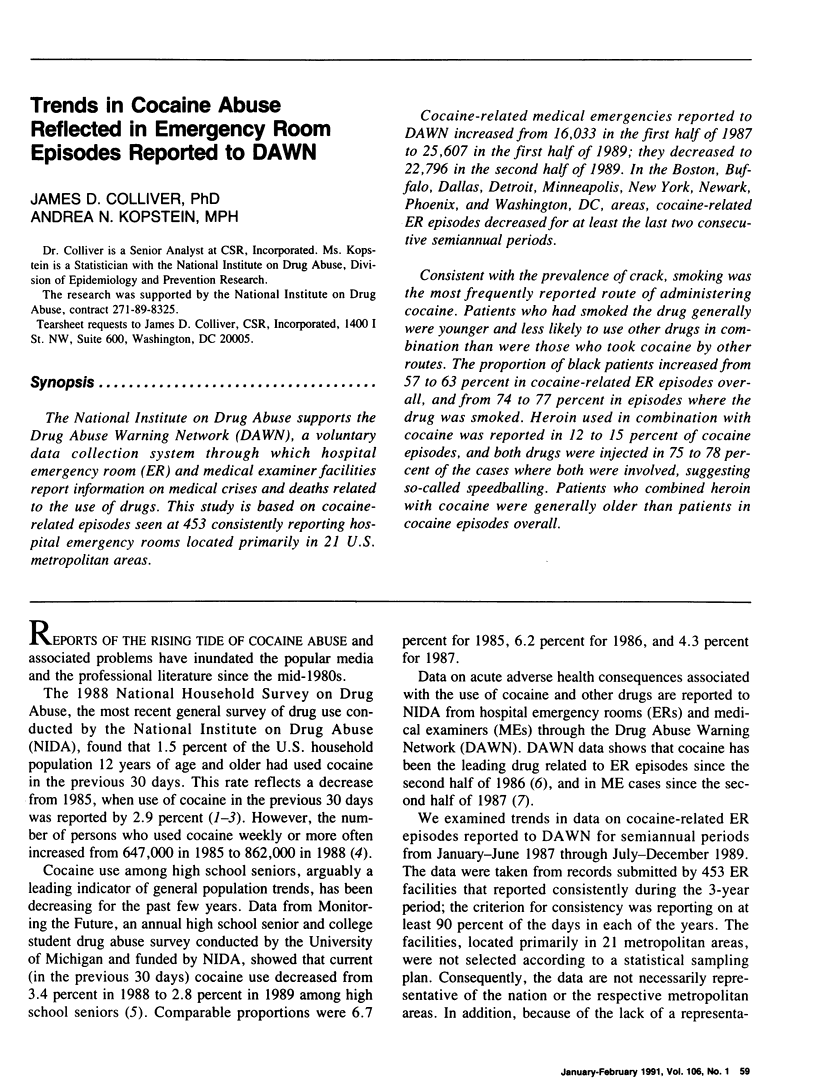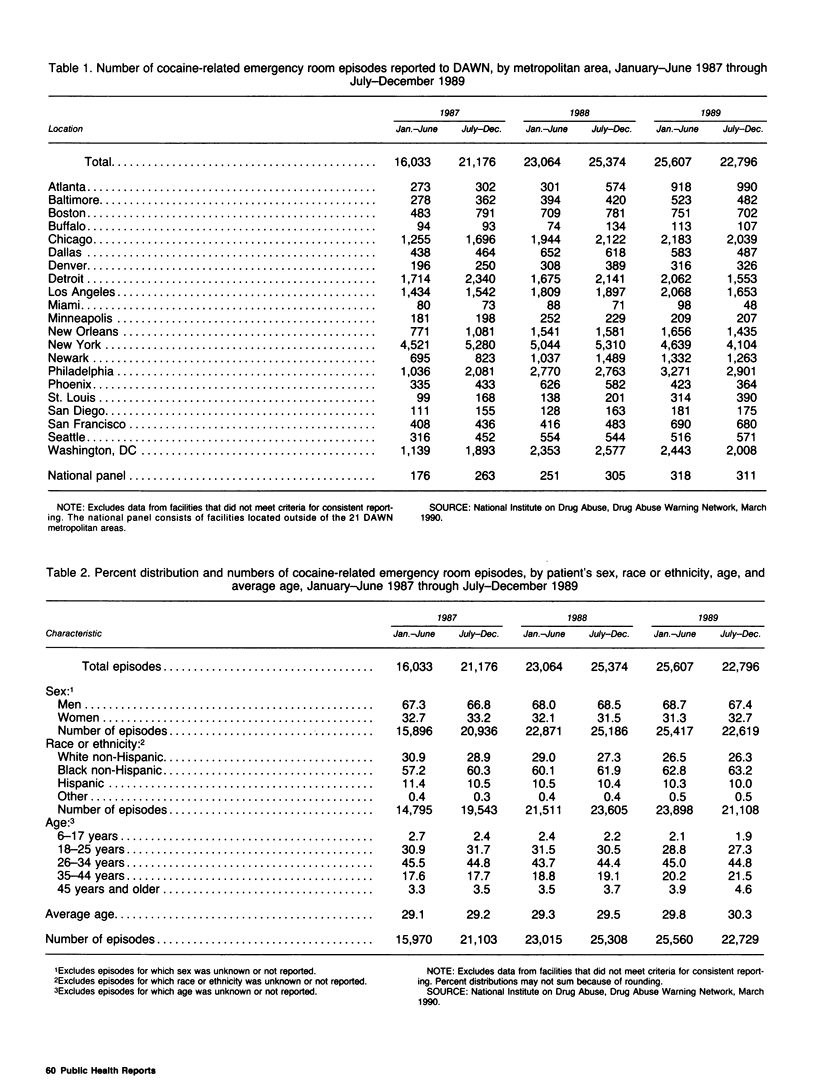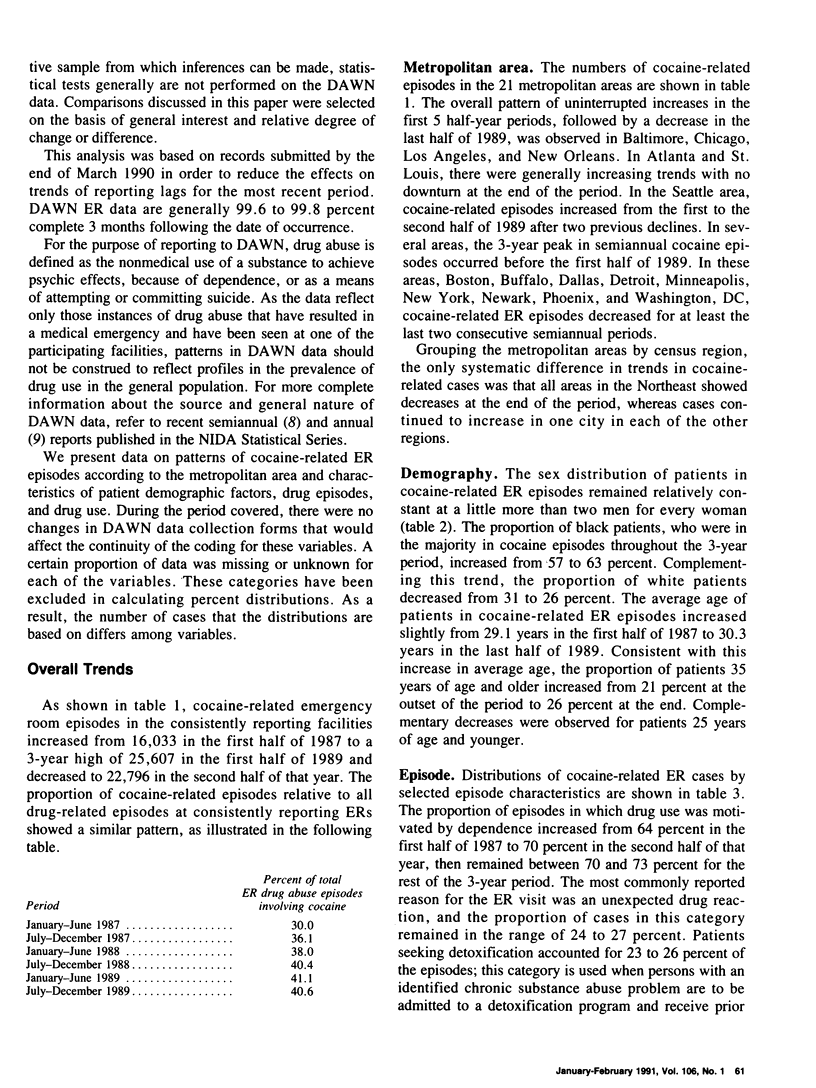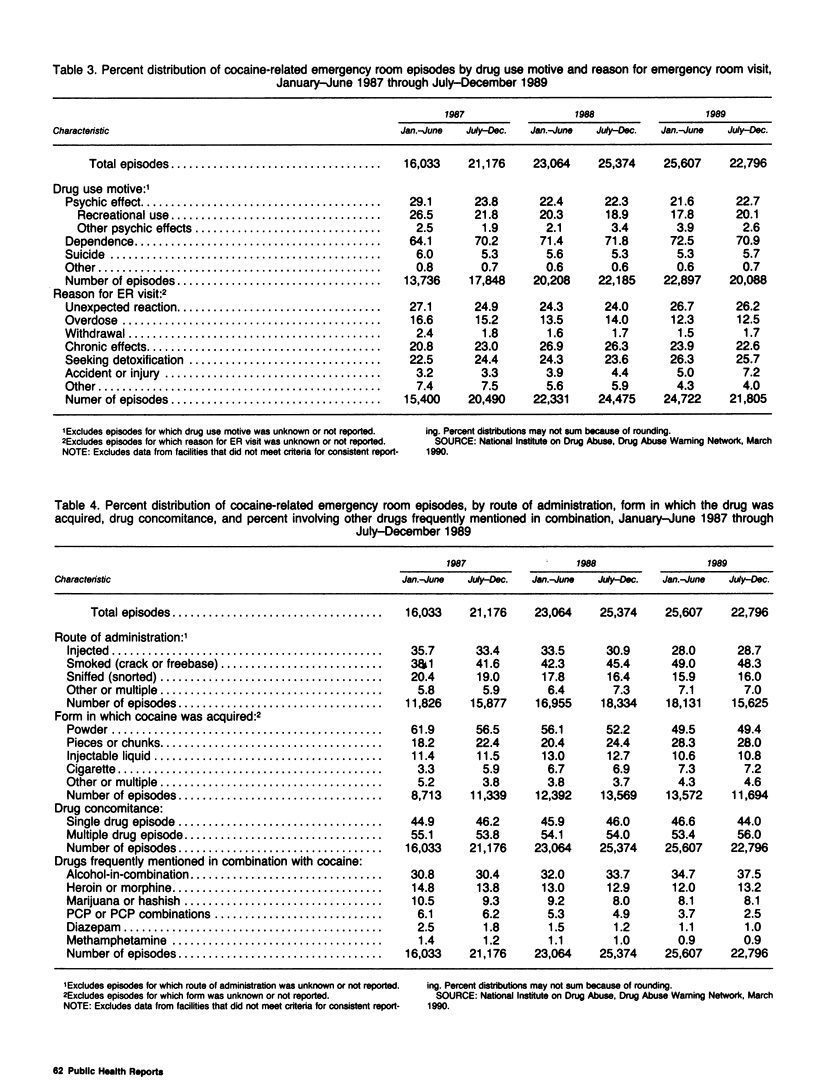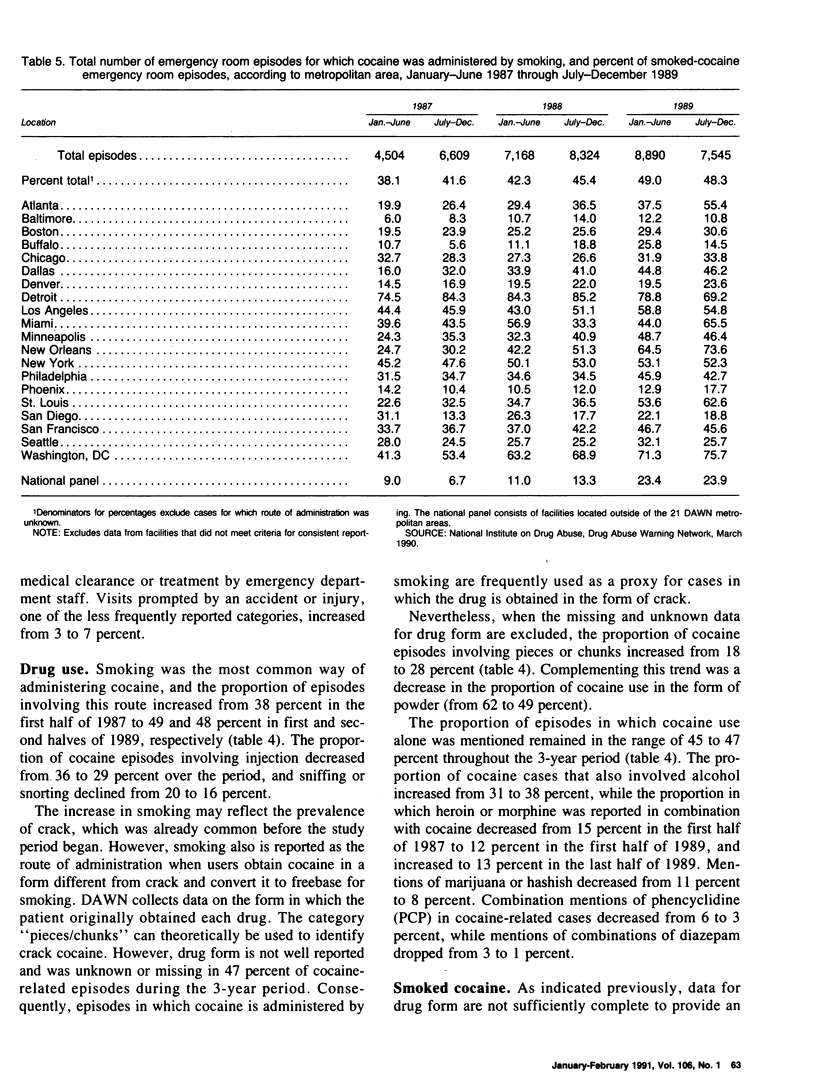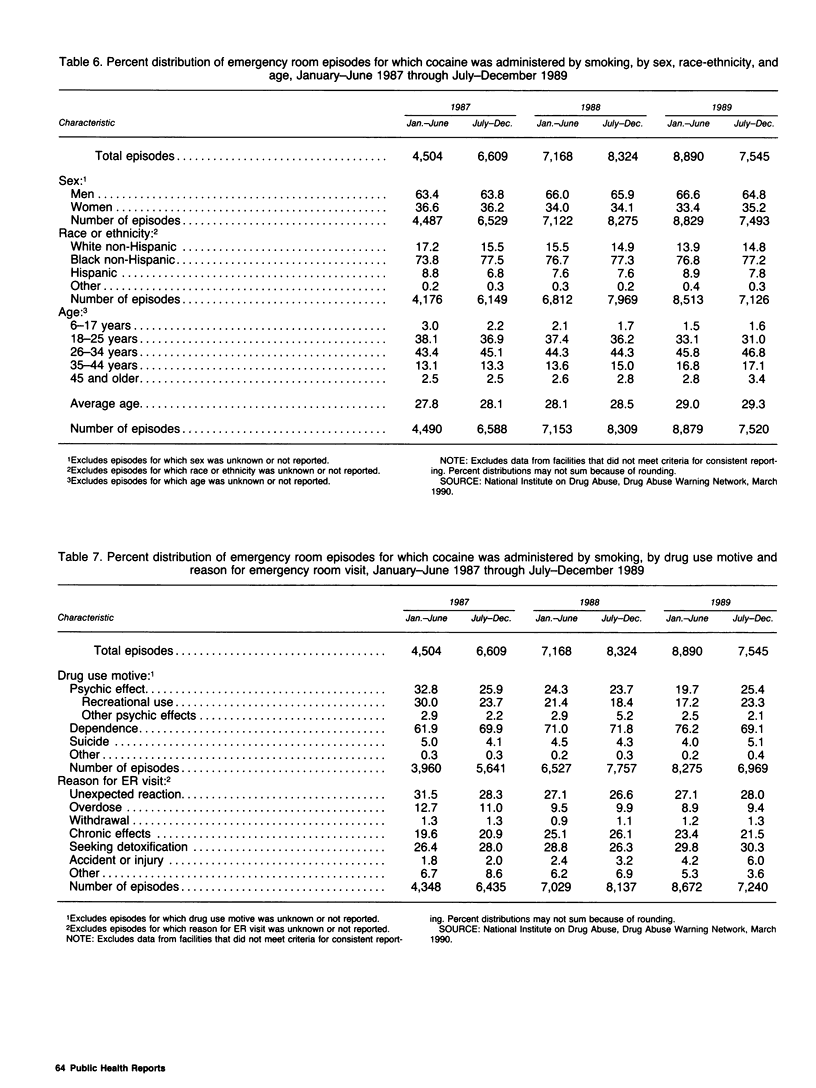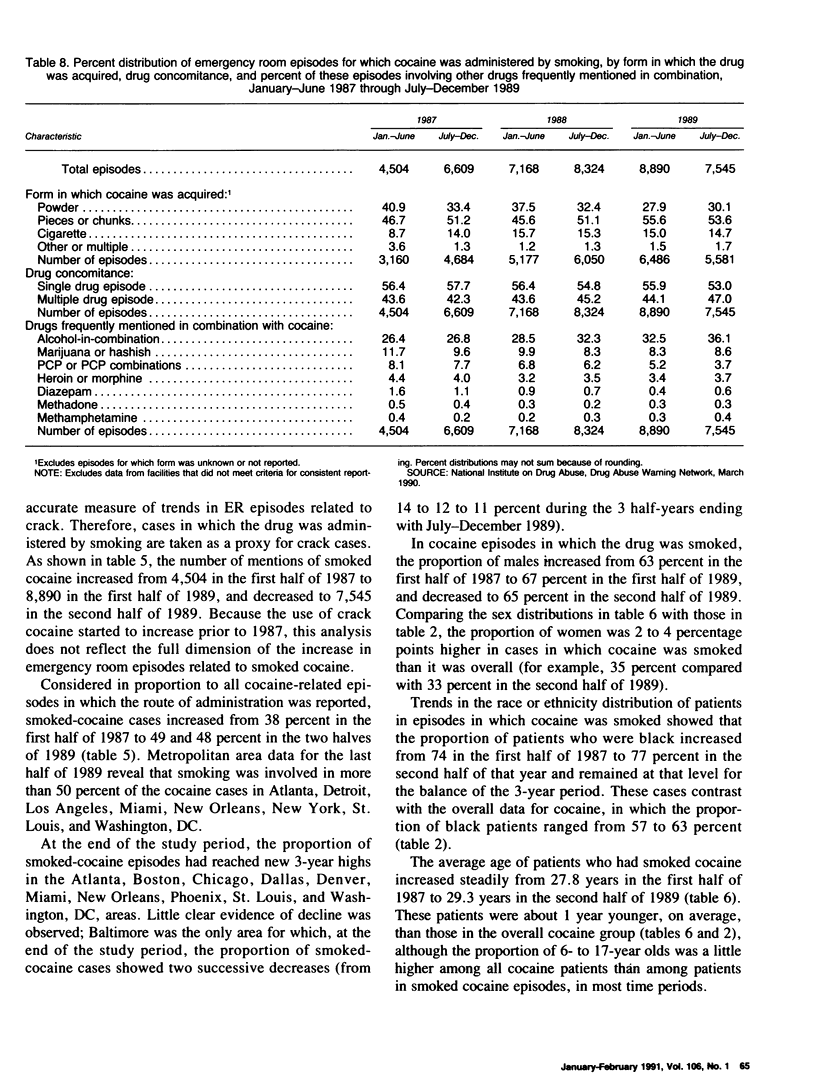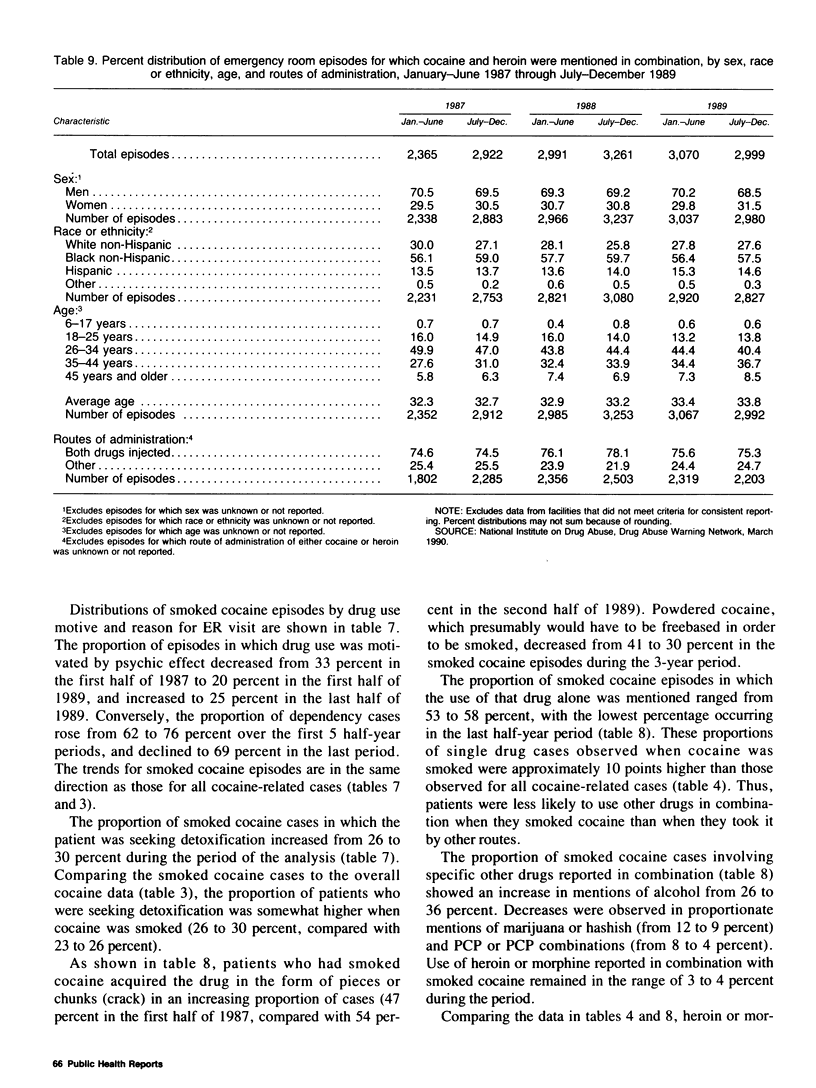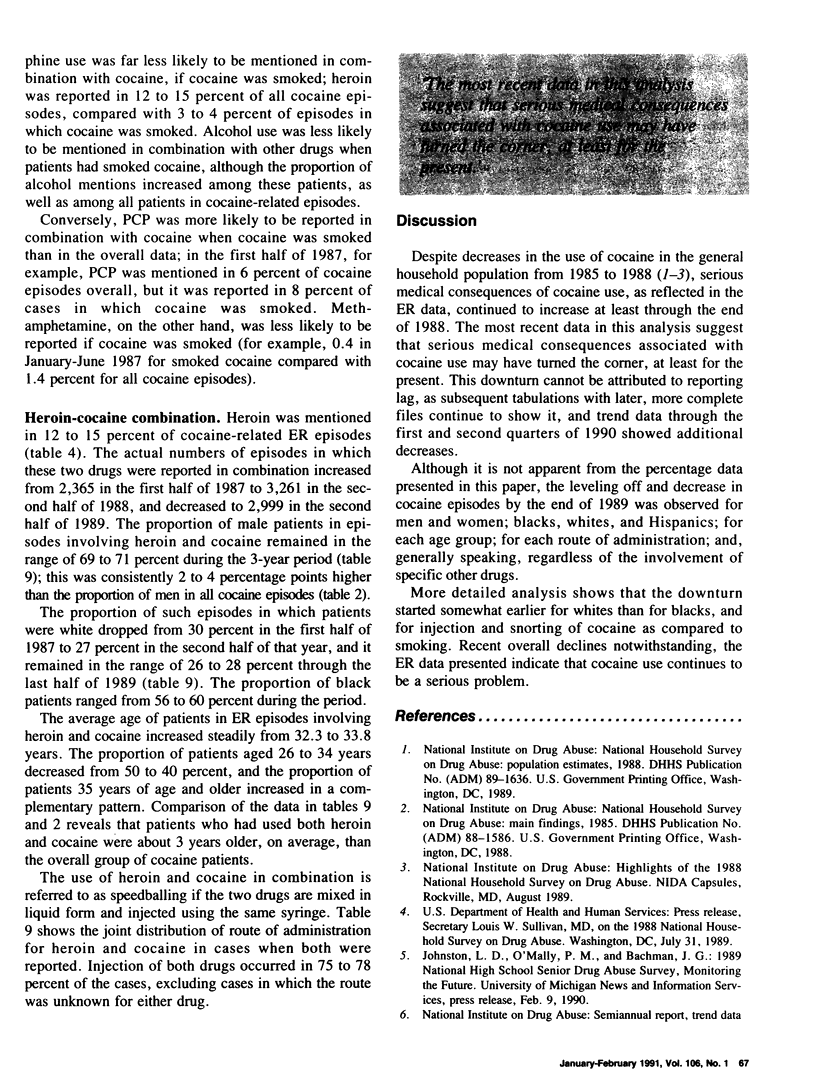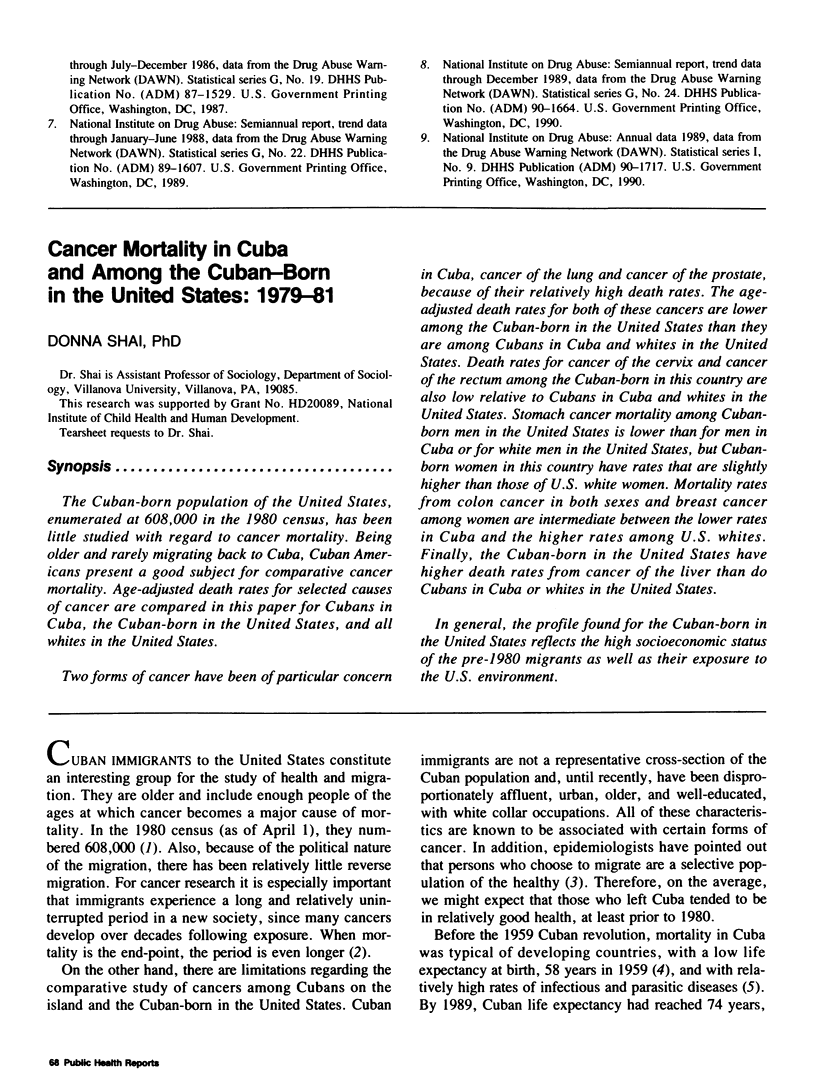Abstract
The National Institute on Drug Abuse supports the Drug Abuse Warning Network (DAWN), a voluntary data collection system through which hospital emergency room (ER) and medical examiner facilities report information on medical crises and deaths related to the use of drugs. This study is based on cocaine-related episodes seen at 453 consistently reporting hospital emergency rooms located primarily in 21 U.S. metropolitan areas. Cocaine-related medical emergencies reported to DAWN increased from 16,033 in the first half of 1987 to 25,607 in the first half of 1989; they decreased to 22,796 in the second half of 1989. In the Boston, Buffalo, Dallas, Detroit, Minneapolis, New York, Newark, Phoenix, and Washington, DC, areas cocaine-related ER episodes decreased for at least the last two consecutive semiannual periods. Consistent with the prevalence of crack, smoking was the most frequently reported route of administering cocaine. Patients who had smoked the drug generally were younger and less likely to use other drugs in combination than were those who took cocaine by other routes. The proportion of black patients increased from 57 to 63 percent in cocaine-related ER episodes overall, and from 74 to 77 percent in episodes where the drug was smoked. Heroin used in combination with cocaine was reported in 12 to 15 percent of cocaine episodes, and both drugs were injected in 75 to 78 percent of the cases where both were involved, suggesting so-called speedballing. Patients who combined heroin with cocaine were generally older than patients in cocaine episodes overall.
Full text
PDF